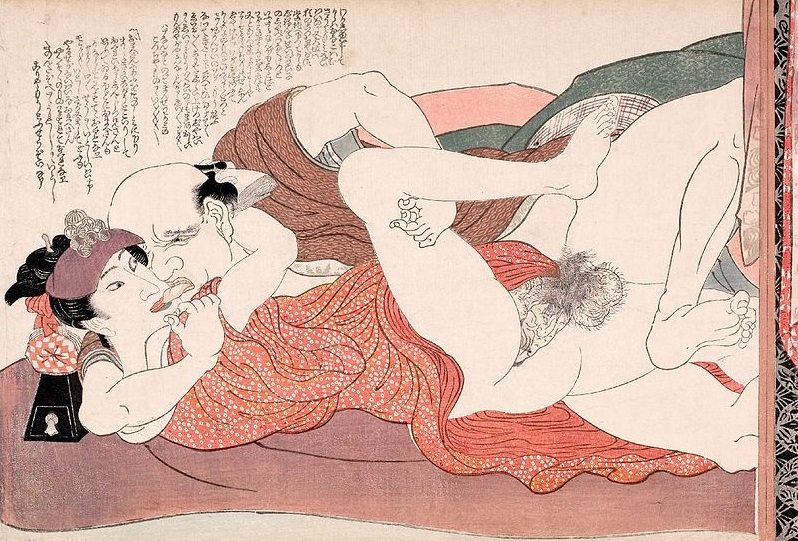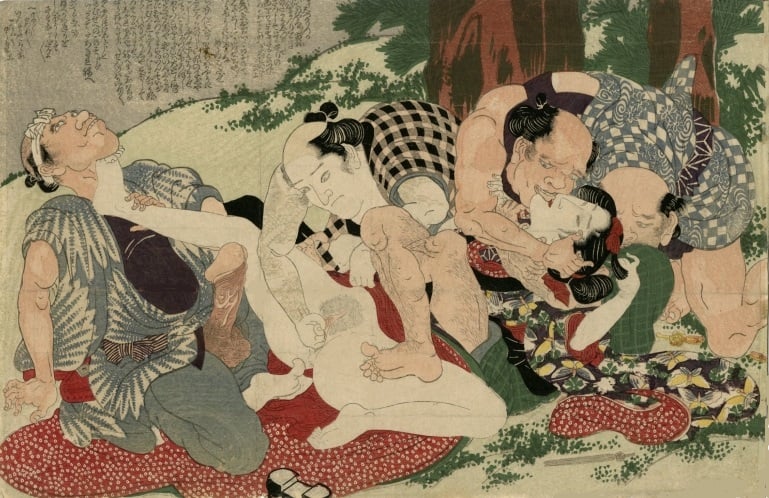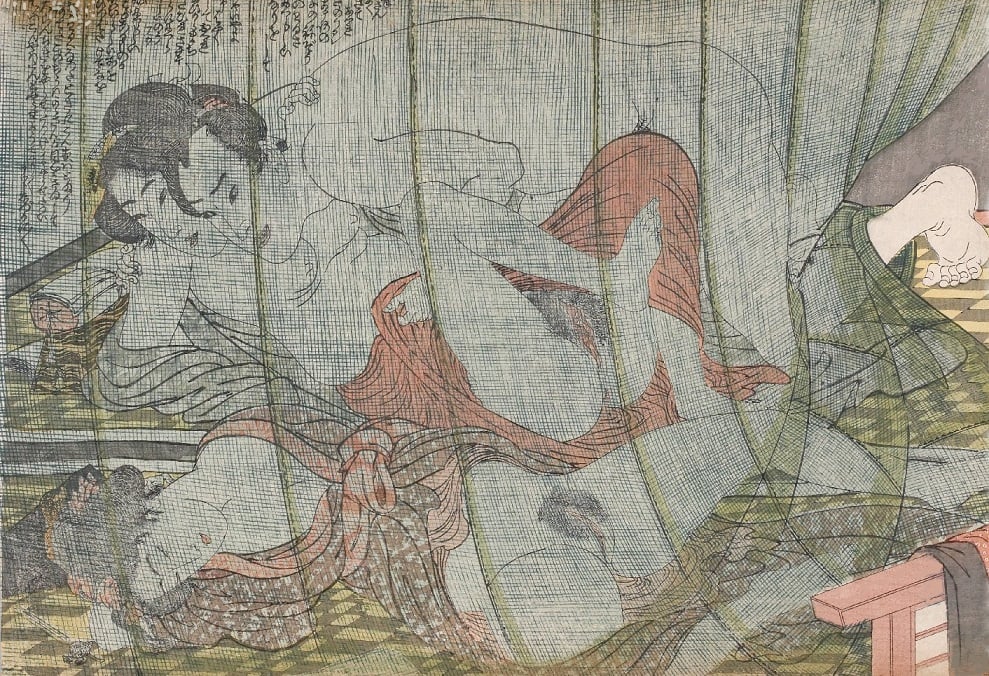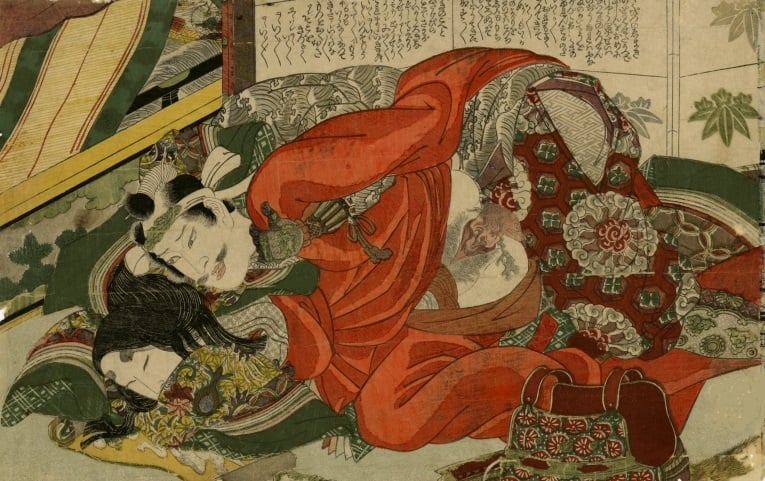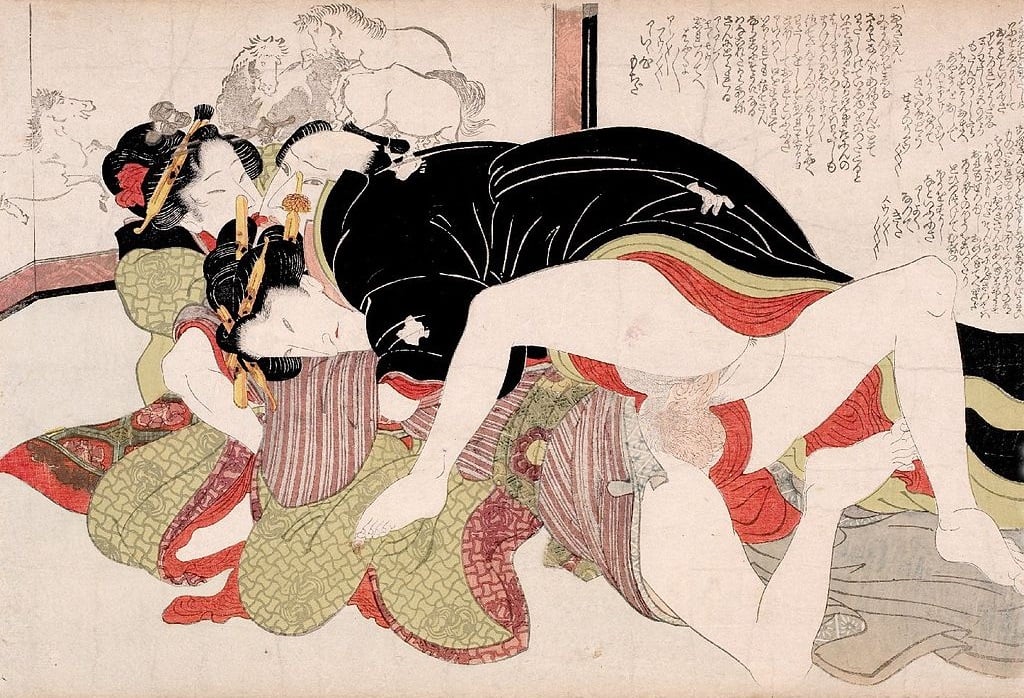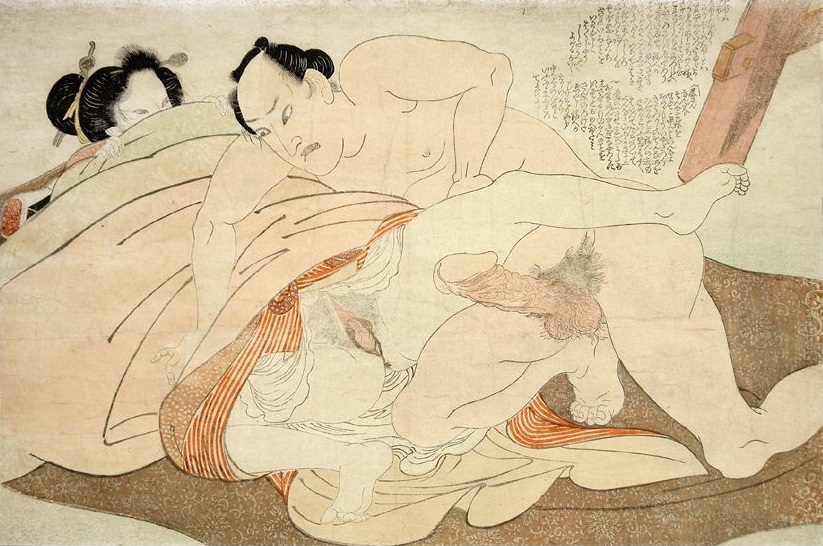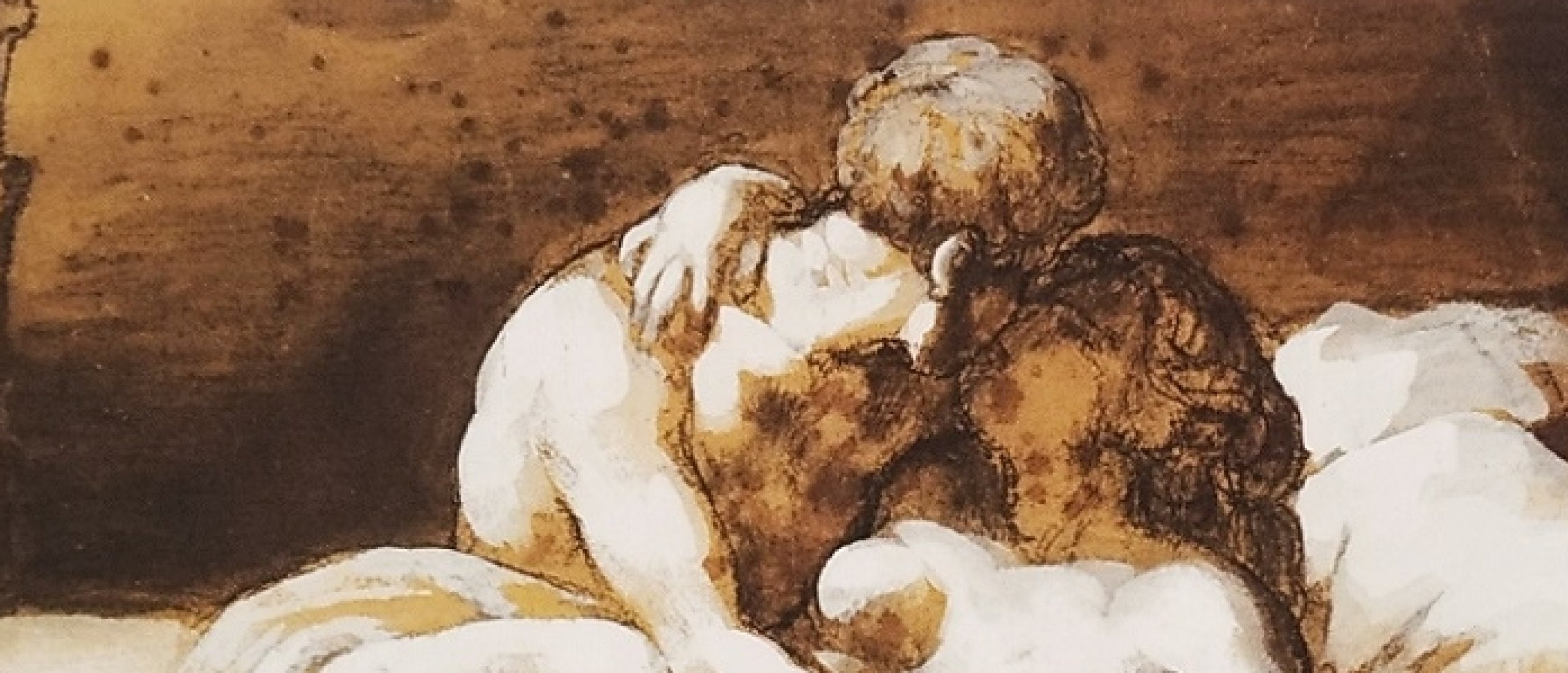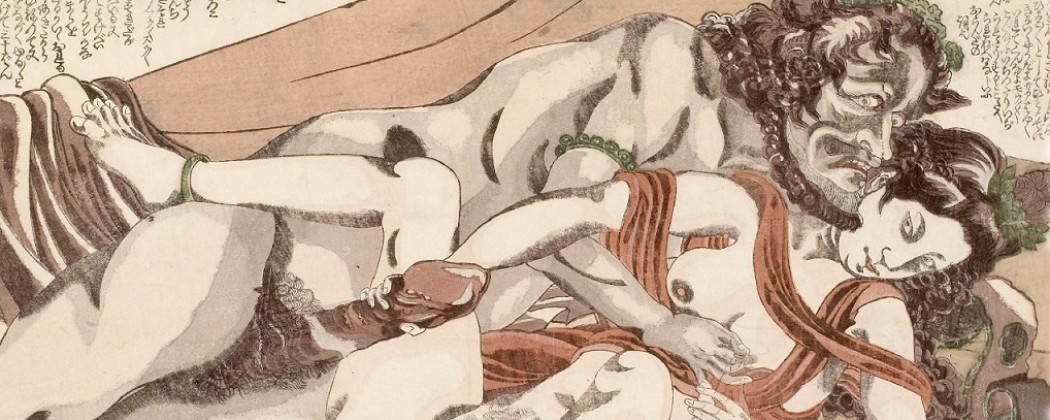
The final (the 12th) plate from Yanagawa Shigenobu (1787-1833)’s ‘Willow Storm‘-series (late 1820s) is an emulation of the trendy copper etchings of the time. It shows a scene from the boudoir of a “Southern Barbarian” (European).
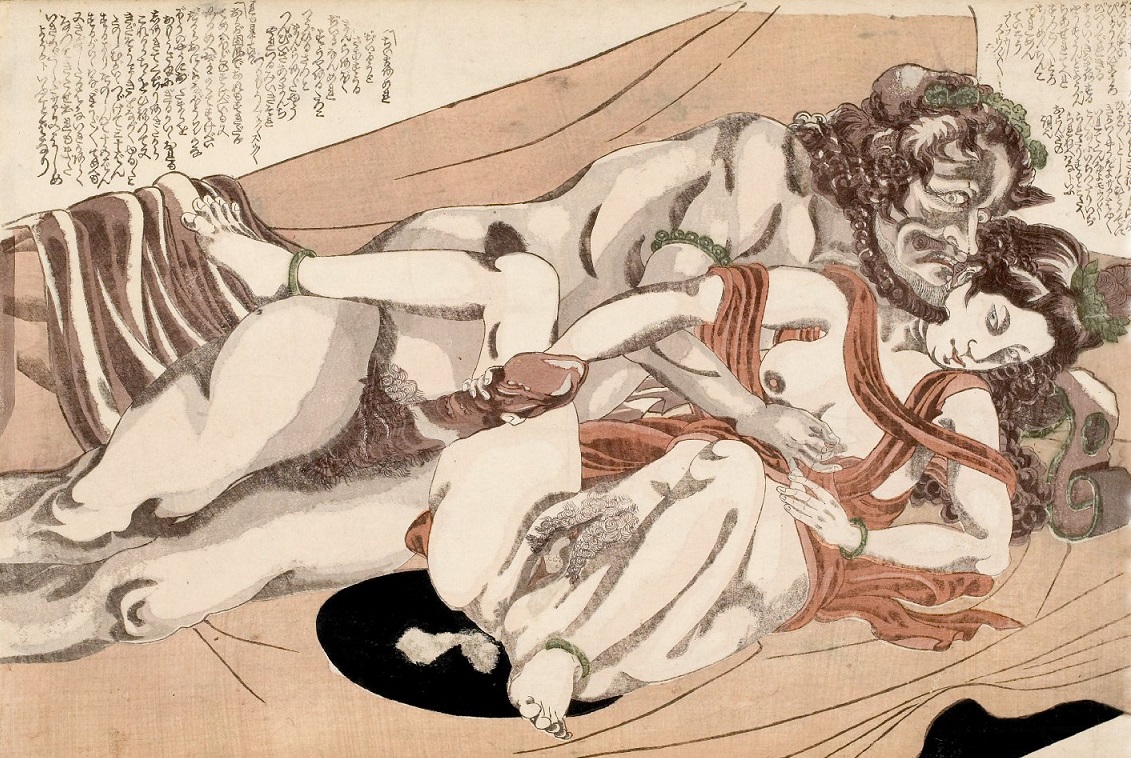
‘Dutch couple‘ (late 1820s) 12th Plate from the series ‘Willow Storm (yanagi no arushi)‘ by Yanagawa Shigenobu (1787-1833)
Unrivaled
Not even the great Hokusai (1760-1849) ever created a print like this one. In fact, there is not a single shunga from the whole Edo period that comes close to it. It is totally unique and unrivaled. I have seen a wonderful impression of this piece in 2005 at the exhibition Lentelust in de Kunsthal, Rotterdam and I was completely mesmerized by its vivid beauty.
Nude European
Undoubtedly, Shigenobu had never seen a nude European, so we may assume that the design was sketched completely from his imagination. Subsequently, the genitalia are quite outlandish with the pubic hairs curled like the hair of Shakyamuni Buddha, creating a comical effect. The text is supposed to be in Dutch this time around, and is even more absurd than the Chinese characters in plate 11.
Shigenobu’s Foresight
Shunga expert Hayashi Yoshikazu on this print, ‘…The print is not a complete success, but one can’t help but be impressed by Shigenobu’s foresight in choosing to use woodblock printing to emulate the effect of the copper etching, newly introduced from abroad.
Sexual Customs
The effort that went into this depiction of sexual customs goes without saying, and it looks as if Shigenobu supervised the carving and the printing as well. There were surely limits to the appeal of this technique in the ukiyo-e market, so it was quite insightful to choose to put it out as a shunga.”
Chris Uhlenbeck remarks: “…This composition of a Western couple is unique within shunga, not only for the subject-matter but also for the attempts at shading, most likely in imitation if Western copperplate etching.
Imitations
It is interesting to speculate about which Western examples circulating in Japan at the time would have provided the inspiration for this print. Perhaps they were prints based on the drawings in or later eighteenth-century imitations of Il modo by Giulio Romano (1499-1546).”*
Click HERE for more attractive designs from the ‘Willow Storm‘-series!
Source: Vol.4 of ‘Teihon ukiyo-e shunga meihin shusei (The Complete Ukiyo-e Shunga)’, 1997 by Hayashi Yoshikazu
* ‘Japanese Erotic Fantasies: Sexual Imagery of the Edo Period‘ by C. Uhlenbeck and M. Winkel


